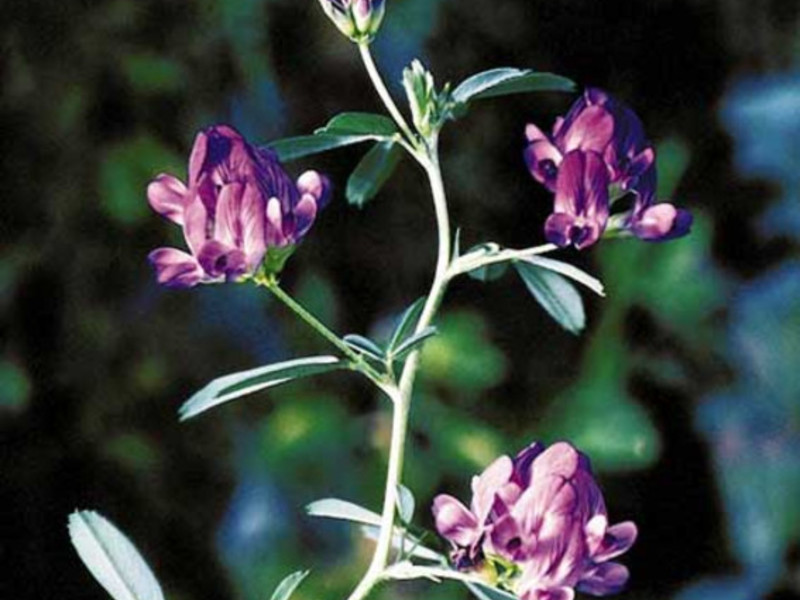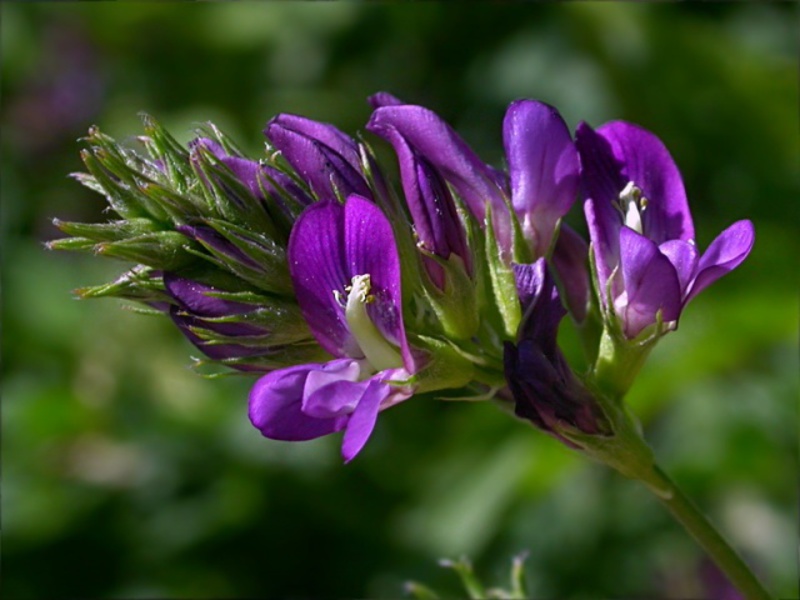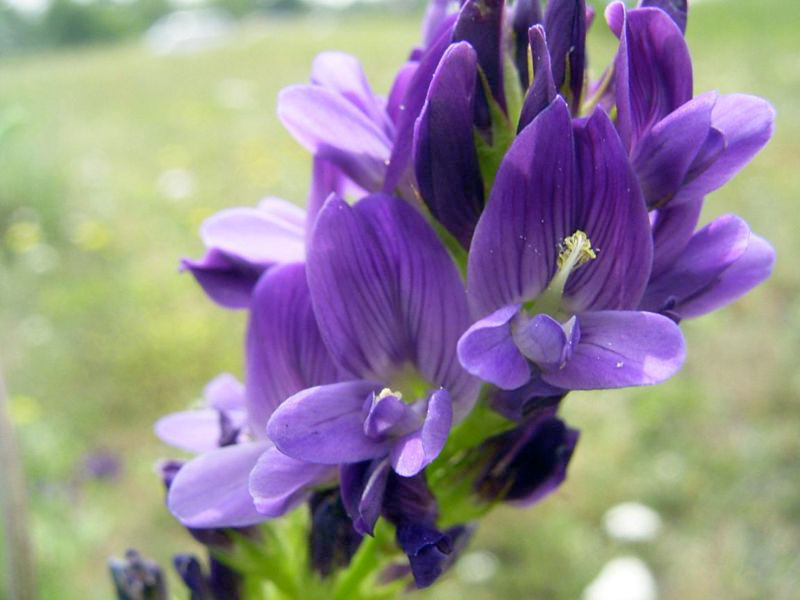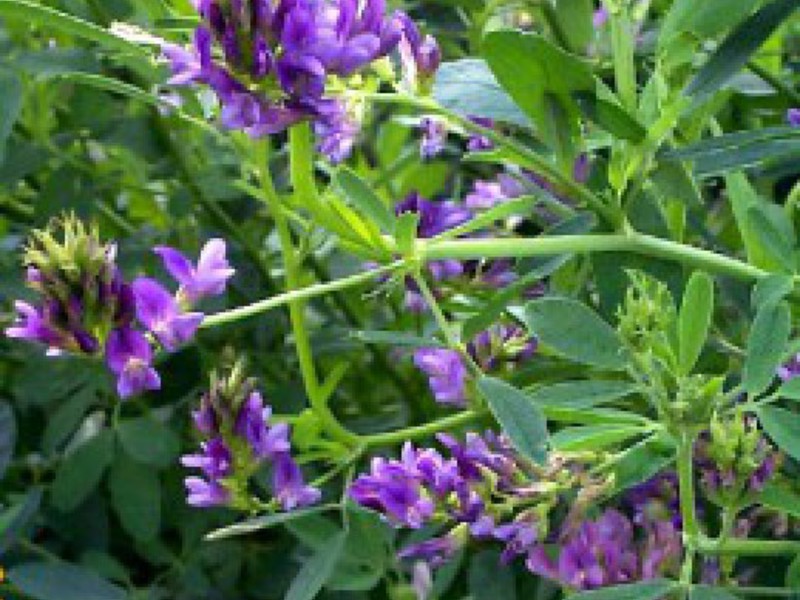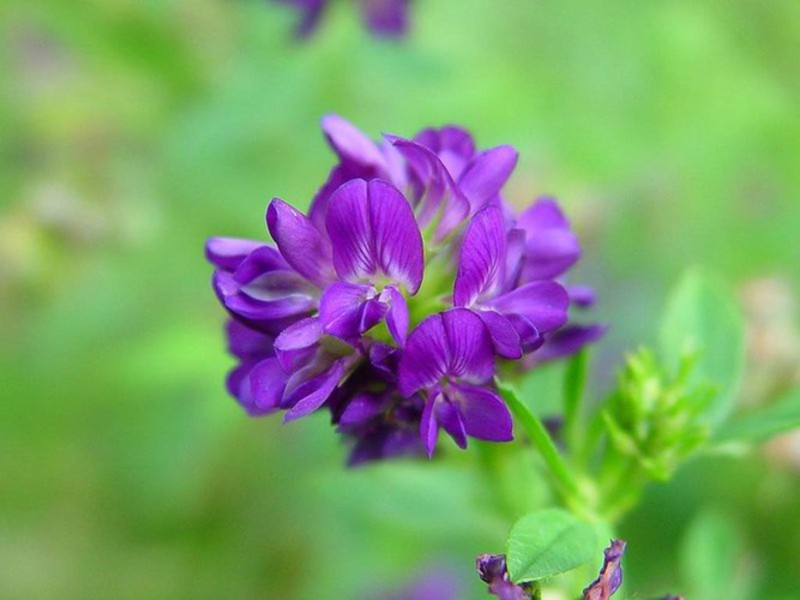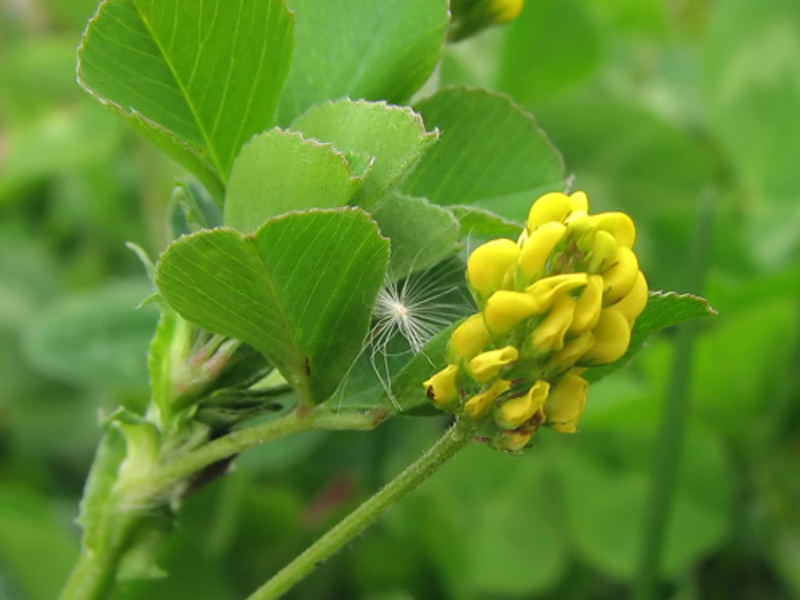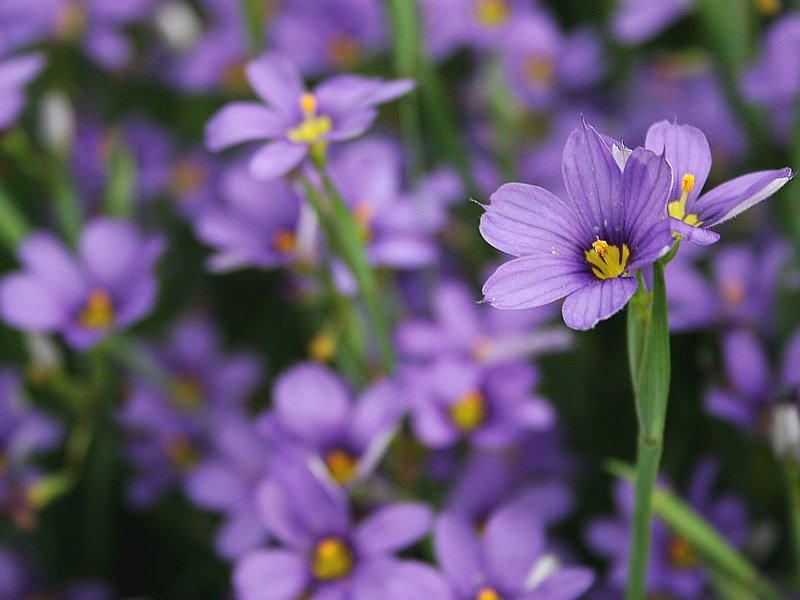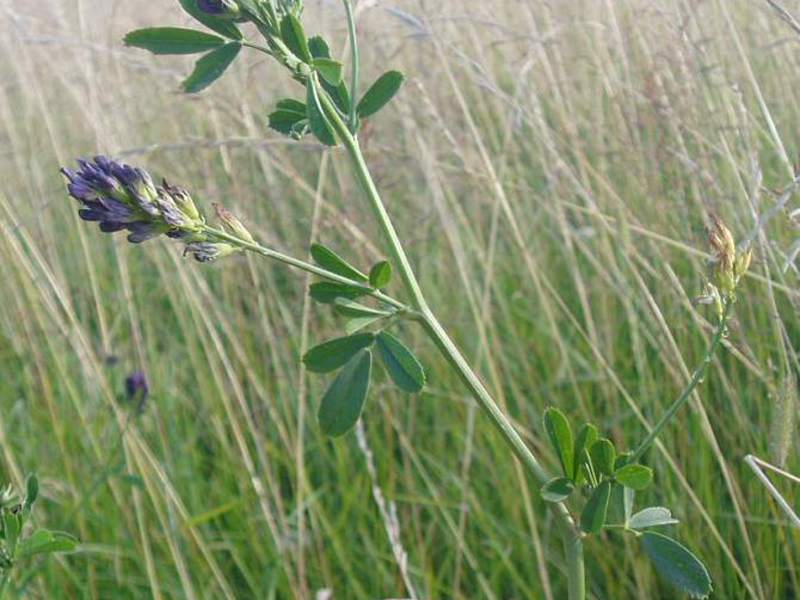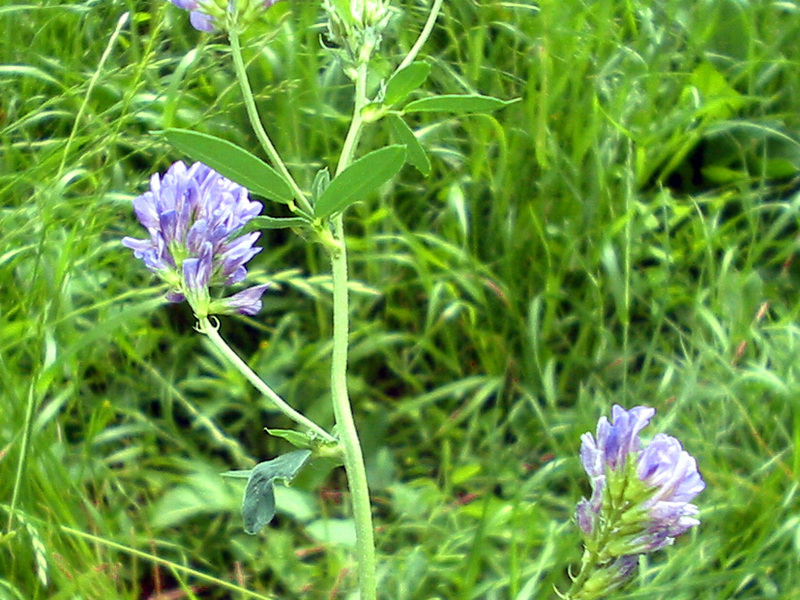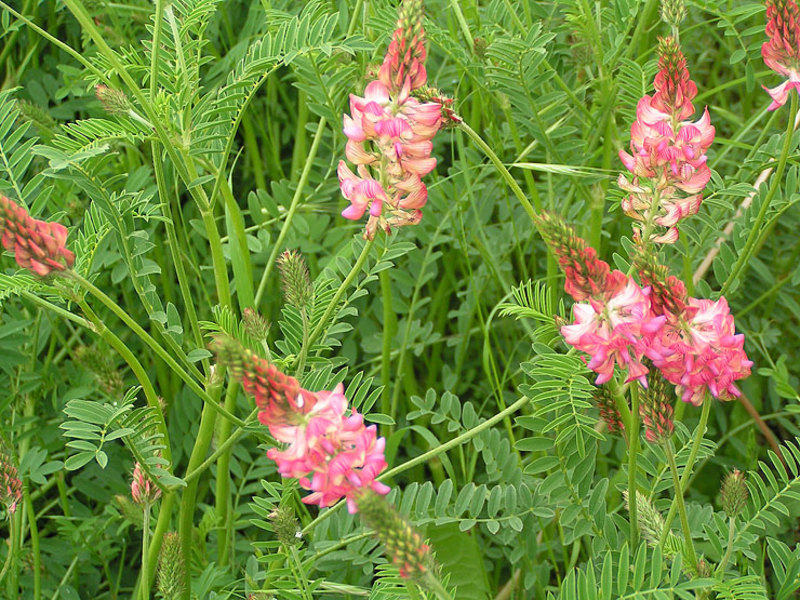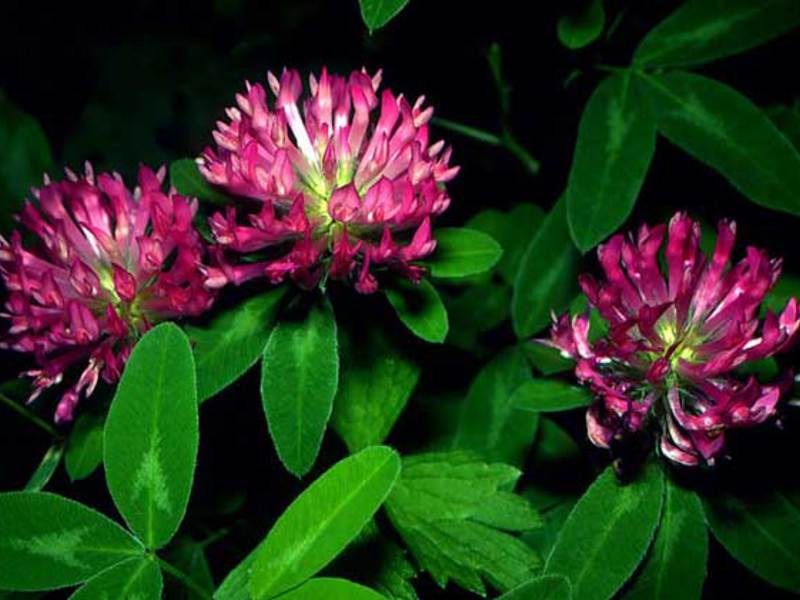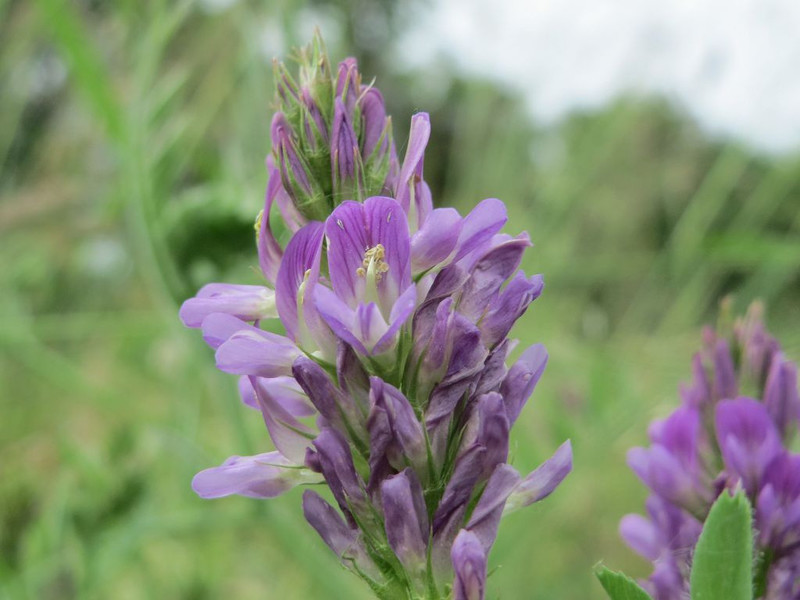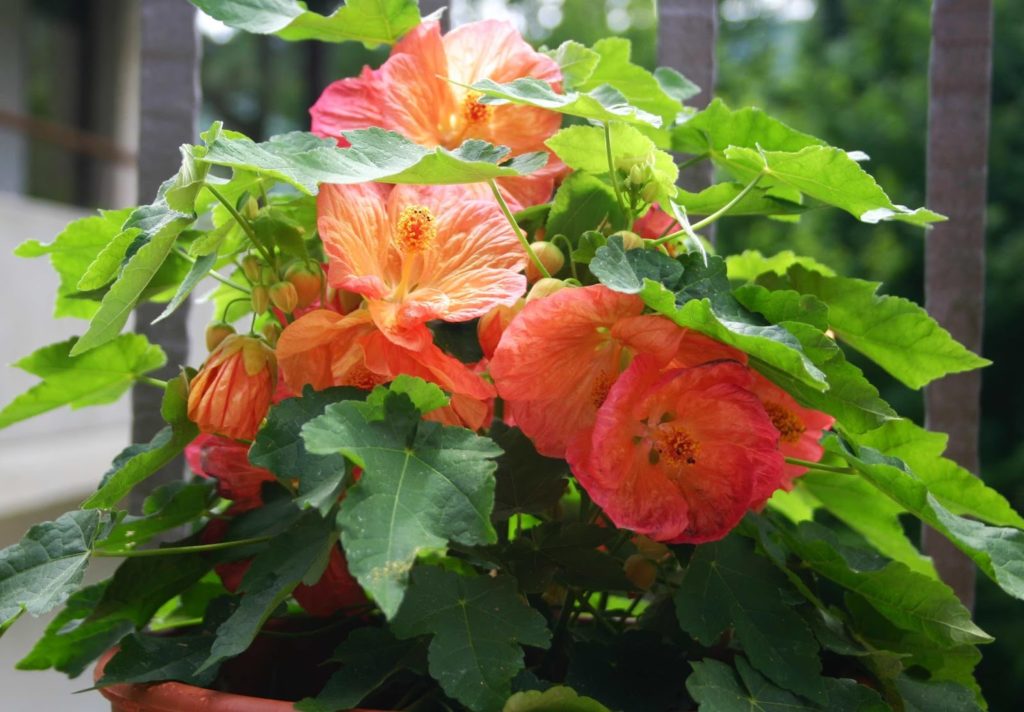Alfalfa is a medicinal plant, a bright representative of the legume family. Wild grass has a straight stem, small leaves, located along the entire length of the stem, as seen in the photo. The homeland of alfalfa is Central Asia, but it can be found in the Balkans and Central Russia.
The plant species differ in the color of the flowers and the shape of the fruit.
Yellow alfalfa is a perennial with a powerful root system. The stems of the plant are numerous, ascending.
Hop-like alfalfa - an annual and biennial herb that has a taproot that can penetrate into the ground to a depth of 40 centimeters.
An adult plant, as you can see in the photo, is a bush with many stems extending from the roots.
How to grow alfalfa?
You can also grow a wild plant in the garden. Before sowing grass, preparatory work must be done:
- Free the area from weeds.
- Loosen the ground.
- Apply fertilizer to the soil.
- Sow seeds in separate rows or together with legumes or cereals.
The herb is commonly grown as pet food. For medicinal and gastronomic purposes, the grass can be grown without soil. To do this, simply sprout sprouts. They taste like green peas.
Germination
To germinate seeds you need:
- Soak a bag of seeds in a cup of cold water overnight.
- In the morning, rinse the seeds thoroughly and transfer to another container.
- Give the container a horizontal position.
- Rinse the seeds at least 3 times a day.
Seedlings will appear in 7 days. Before use, the change must be separated from the sprouts. Rinse the sprouts and store in a paper towel on the top shelf of the refrigerator. The photo clearly shows how the sprouts should look like.
Harvest the ground part of the plant during flowering... Leafless lower parts should not fall into the raw material. Dry the grass in a ventilated and warm room. You can dry outdoors, but always in the shade.
The healing properties of the plant
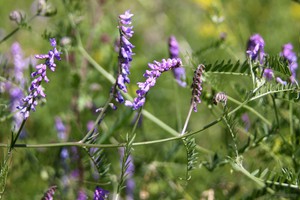 The medicinal properties of alfalfa have been known in Chinese medicine for a very long time. The flower contains chlorophyll, which perfectly removes toxins and toxins from the human body, helping to cleanse the body.
The medicinal properties of alfalfa have been known in Chinese medicine for a very long time. The flower contains chlorophyll, which perfectly removes toxins and toxins from the human body, helping to cleanse the body.
The flower has laxative and diuretic properties. Helps with constipation and excess fluid removal.
It is indispensable for hormonal disorders, facilitates the plant the course of the climacteric period... The flower contains natural isoflavonoids with hormonal properties.
It has a beneficial effect on the circulatory system. Contains Vitamin K and Iron.
The leaf powder is used in folk medicine to heal open wounds, cuts and as a hemostatic agent.
A decoction of alfalfa herb helps with Trichomonas colpitis. Used for douching.
Contraindications
A plant with individual intolerance can harm the human body. It is forbidden to use alfalfa for lupus erythematosus. Pregnant women and children under 10 years old should not use the oil from the seeds of this plant. Contraindications to the use of alfalfa oil are gallstones and pancreatitis.
The use of alfalfa in cooking
In cooking, the flower is used to decorate festive dishes. Plant sprouts are added to salads, soups and cocktails. The plant can perfectly replace green peas. The calorie content of a plant per 100 grams is only 29 kilocalories.
Alfalfa fresh Is a delicious and healthy drink. It raises tone, strengthens the immune system, protects against ailments:
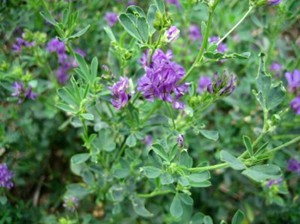 cleanses the intestines and liver;
cleanses the intestines and liver;- reduces the risk of heart attacks;
- removes odor from the mouth and heals the gums;
- reduces headaches;
- prevents exacerbation of colitis and gastritis;
- eliminates edema and genitourinary infections.
Plant spread
Alfalfa grows everywhere, but black soil is the optimal soil for it. The predecessors of alfalfa on the site can be potatoes, corn, melons.
A bountiful crop of a plant can be obtained only with deep plowing of the soil. The harvest increases the introduction of molybdenum into the soil.
Alfalfa extract is indicated for the following diseases:
- flu, sore throat, pharyngitis;
- diathesis and allergies;
- as prevention in cancer;
- with chemotherapy;
- with diseases of the supporting apparatus, open bone fractures;
- with gum disease, stomatitis;
- infertility, prostate adenoma;
- for diseases in the thyroid gland.
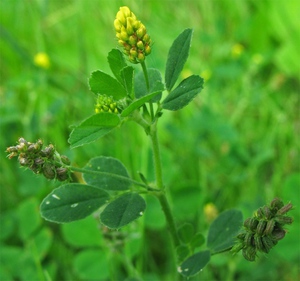 The plant is in demand for the treatment of the heart. Decoctions are used for problems with vessels. They soften dense arteries and normalize arterial hypertension.
The plant is in demand for the treatment of the heart. Decoctions are used for problems with vessels. They soften dense arteries and normalize arterial hypertension.
They also apply it for the prevention of diabetes... The herb contains manganese, which is good for lowering blood sugar levels. The condition of patients with insulin resistance is improving.
You can protect the body with the help of this greenery from the development of all kinds of viruses, incl. and herpes.
Alfalfa is called the queen of forage crops in most countries. This is true, because the plant, with proper care and irrigation, gives at least 35 tons of hay per hectare during the growing season.
